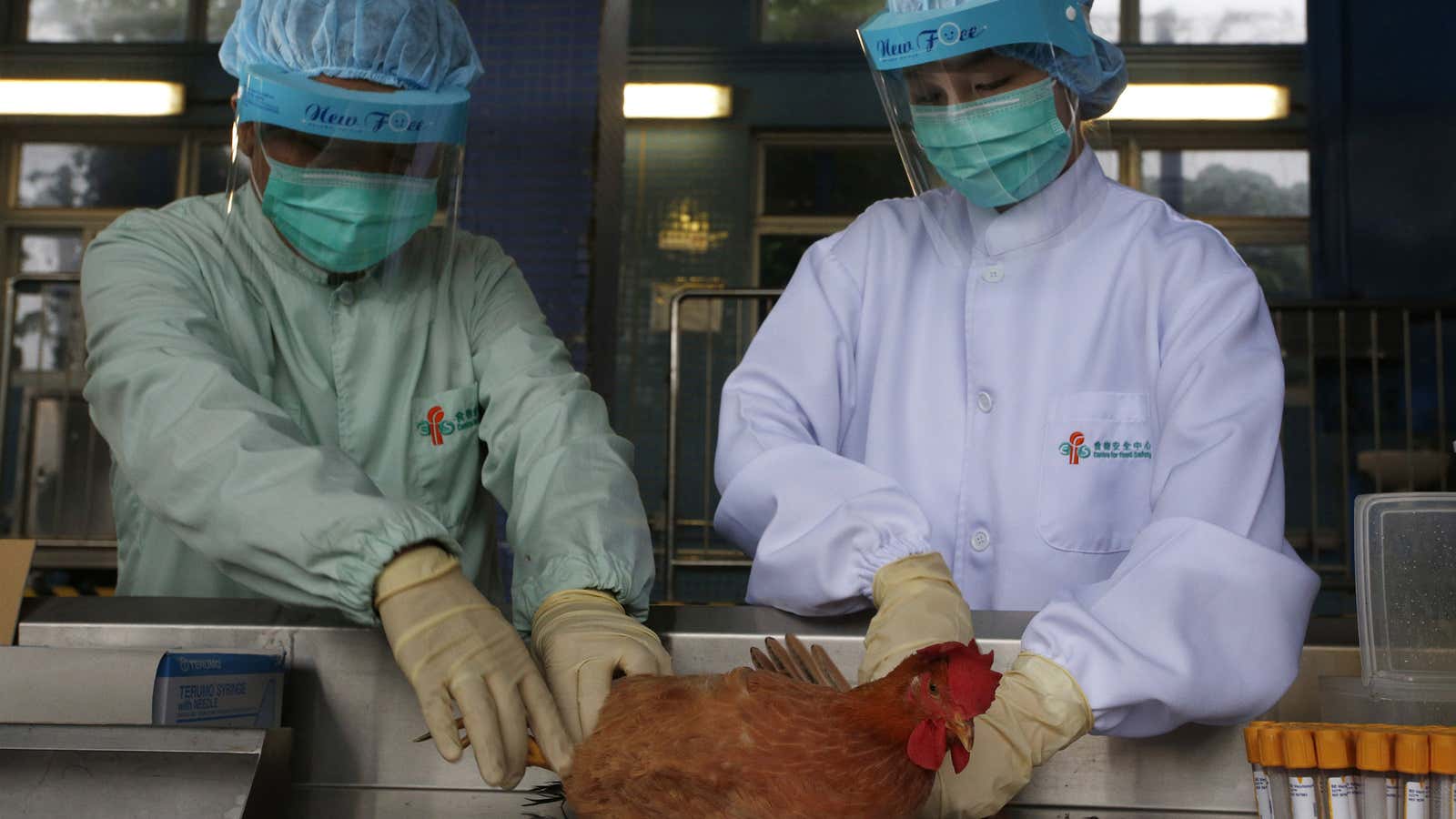Some memories die hard. For Hong Kong, the economically devastating 2003 outbreak of SARS is only too fresh in the collective memory. Now, as the H7N9 avian flu virus spreads through China, killing 23 on the mainland finding its way to Taiwan, the city is desperate to stop it from getting a foothold.
But there’s a big potential problem: Around 4.2 million people are expected to cross to Hong Kong from Shenzhen between April 27 and May 1 to celebrate the Labor Day holiday. What can the city do to keep the virus at bay?
Spot the hot ones
No human-to human-transmission of H7N9 has been detected, but Hong Kong is taking no risks. Manpower at the border with mainland China has been boosted to help screen the influx of tourists expected for Labor Day and tour operators have been asked to monitor visitors. Large-scale blood tests would be impractical, but thermal imaging can help pick out people suffering from raised body temperatures—a common H7N9 symptom.
Keep it clean
Senior Hong Kong government officials donned gloves, cloths and brooms in a wet market on Saturday to launch a cleanliness campaign. Chief Secretary Carrie Lam Cheng Yuet-ngor and Food and Health Secretary Ko Wing-man tried to set an example for poultry traders to protect against the bird flu virus. And the most efficient way to stop the virus is for everyday citizens to wash their hands, as demonstrated by these adorable children:
Beware the birds
Since early April, Hong Kong has been testing imported poultry to prevent the virus being brought into the city. Government health officials are considering culling all birds in retail and wholesale markets if the virus is found. But the task is daunting, particularly as birds infected with H7N9 do not usually show symptoms. The South China Morning Post reports that 3.54 million live birds were imported from mainland China into Hong Kong last year, from 63 registered suppliers. A former senior government vet has called for a temporary ban on all Chinese chicken imports, as Malaysia has already done, to cut off the most likely source of potential transmission.
Brace for disaster
In 2003, SARS hit Hong Kong hard, killing just under 300 people. Since, the city has been investing in medical facilities to combat contagious infections capable of air transmission. The Wall Street Journal reports that Hong Kong has over 1,400 isolation beds for patient quarantine. Justin Wu, a doctor on the front line during the SARS outbreak, called Hong Kong “the best prepared city in the world.”
The city’s three-level response plan, prepared by the government with previous cases of bird flu and SARS in mind, currently has the city in a state of “alert”—level one—”where the risk of a new influenza virus causing new and serious health impact in Hong Kong is low.” But as the death toll on the mainland continues to rise and infections move closer to Hong Kong’s borders, city officials still preparing for the worst.
